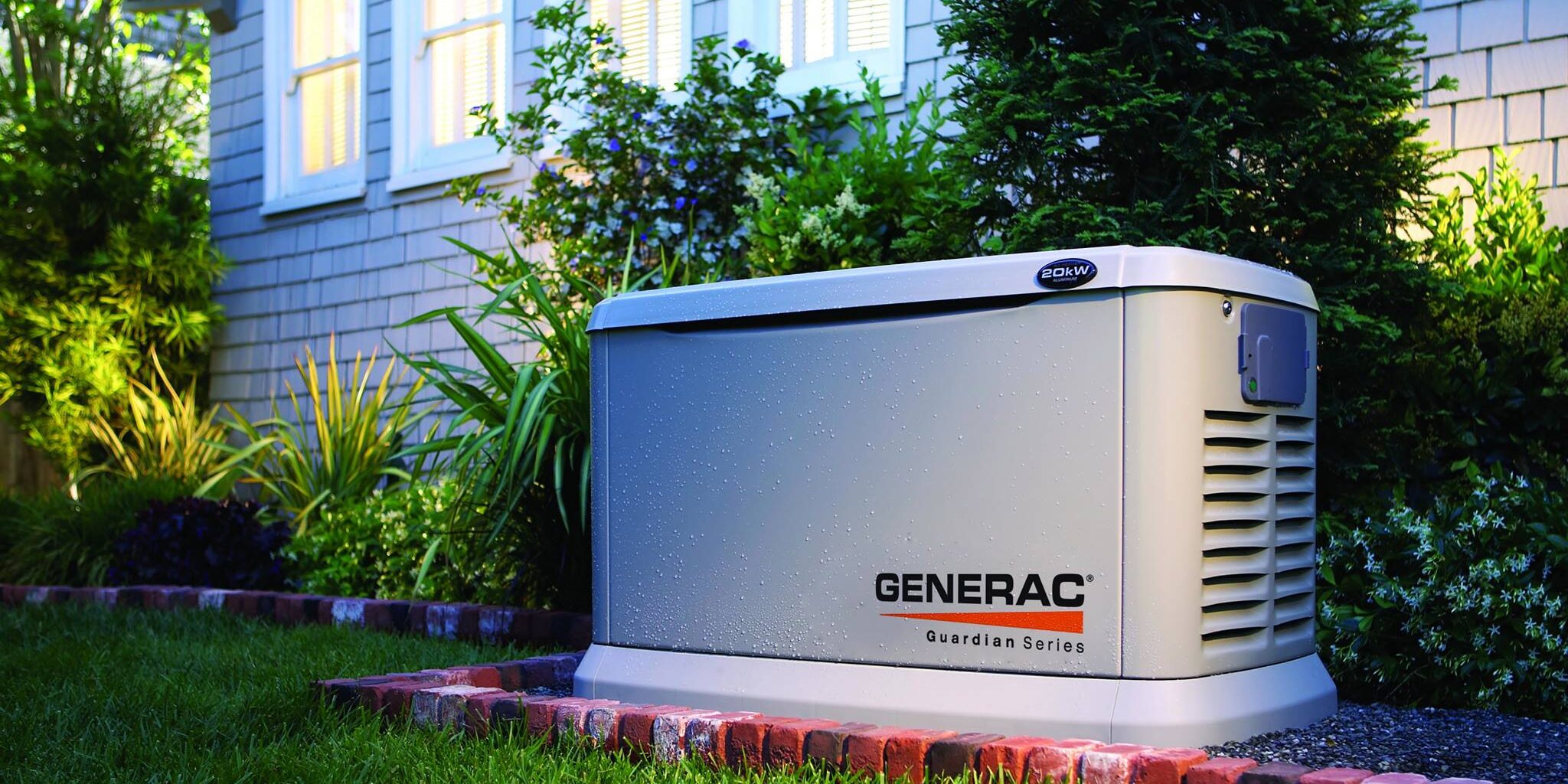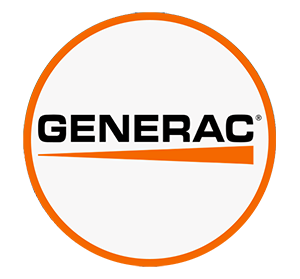
Whole house generators can help you disconnect from the grid entirely or keep your appliances running during extended power outages or emergencies when a portable or standby generator would otherwise fail.
In order to take advantage of those benefits, it’s crucial you get the right generator for your unique situation and application. Check out our list of the best whole house generators to see which model would be the best for you to keep your home running even without a connection to the grid.
Summary: The 5 Best Whole House Generators
| COMPANY | FORBES HOME RATING | PRICING | WARRANTY | NOISE LEVEL | PRICING* | LEARN MORE |
| Generac Guardian Wi-Fi Enabled Standby Generator | 4.5 | Great | Very good | Great | $3,879 | Buy Now On Lowe’s |
| Briggs & Stratton 12,000-Watt Automatic Air Cooled Standby Generator | 4.4 | Great | Very good | Good | $4,299 | Buy Now On Home Depot |
| Champion 14-kW aXis Home Standby Generator with 200-Amp Whole House Switch | 4.4 | Good | Great | Great | $4,799 | Buy Now On Amazon |
| Generac PowerPact 7,500 Watt Standby Generator | 4.3 | Excellent | Good | Good | $2,049 | Buy Now On Amazon |
| Generac Guardian 3-phase 20kW Automatic Standby Generator Wi-Fi Enabled | 4.3 | Good | Very good | Very good | $5,599 | Buy Now On Home Depot |
*NOTE: Pricing information was accurate at the time of publication and may be subject to change.
What Is a Whole House Generator?
A whole house generator is the most powerful type of home generator available. It’s wired to your electric panel and turns on automatically when you lose power, so your entire home stays online if you have the right size. In contrast to a standby or portable generator, a whole house generator will power many more appliances for as long as you can provide it with fuel.
How Does a Whole House Generator Work?
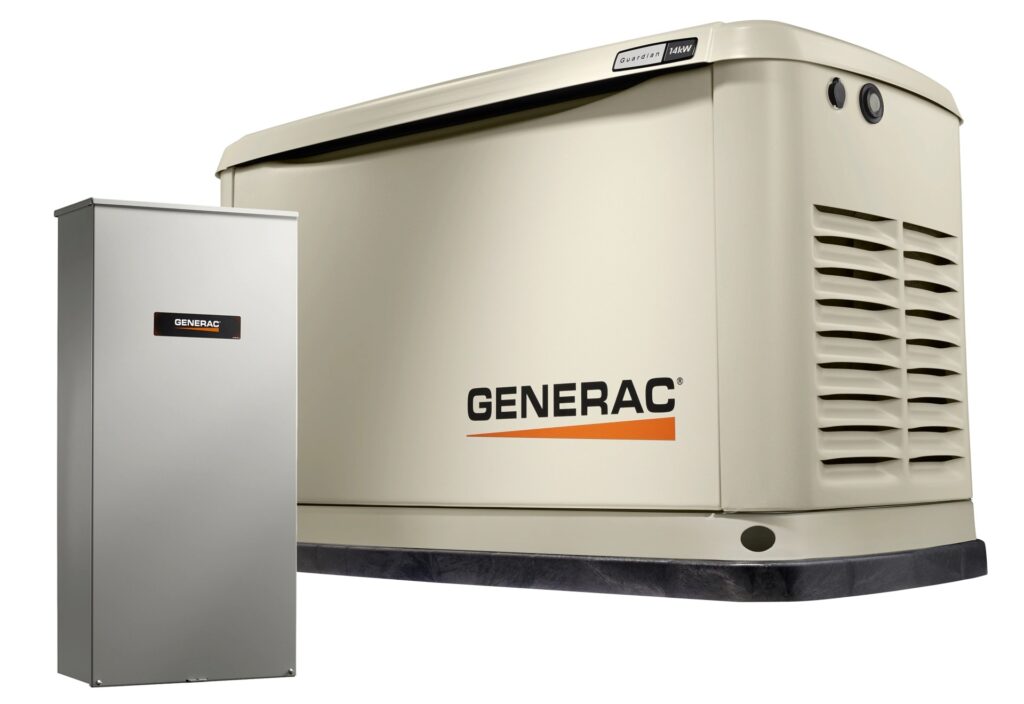
A whole house generator, also known as a standby generator, is a device that provides backup electrical power to an entire house in the event of a power outage. It operates automatically and is designed to restore power quickly and seamlessly, allowing you to maintain essential functions and appliances in your home even when the grid power is down.
The whole house generator is connected to a power grid, which allows it to run automatically. The generator relies on a transfer switch to detect power interruptions. Once a power outage is identified, the generator’s engine is automatically activated and fueled by natural gas, propane or diesel stored on site. This engine drives an alternator to produce electricity, which is then converted to the appropriate voltage and frequency for household use.
How to Determine Which Whole House Generator Is Best for You
Consider four primary elements when choosing a whole house generator: power requirements, cooling systems, fuel types and noise levels.
Power Requirements
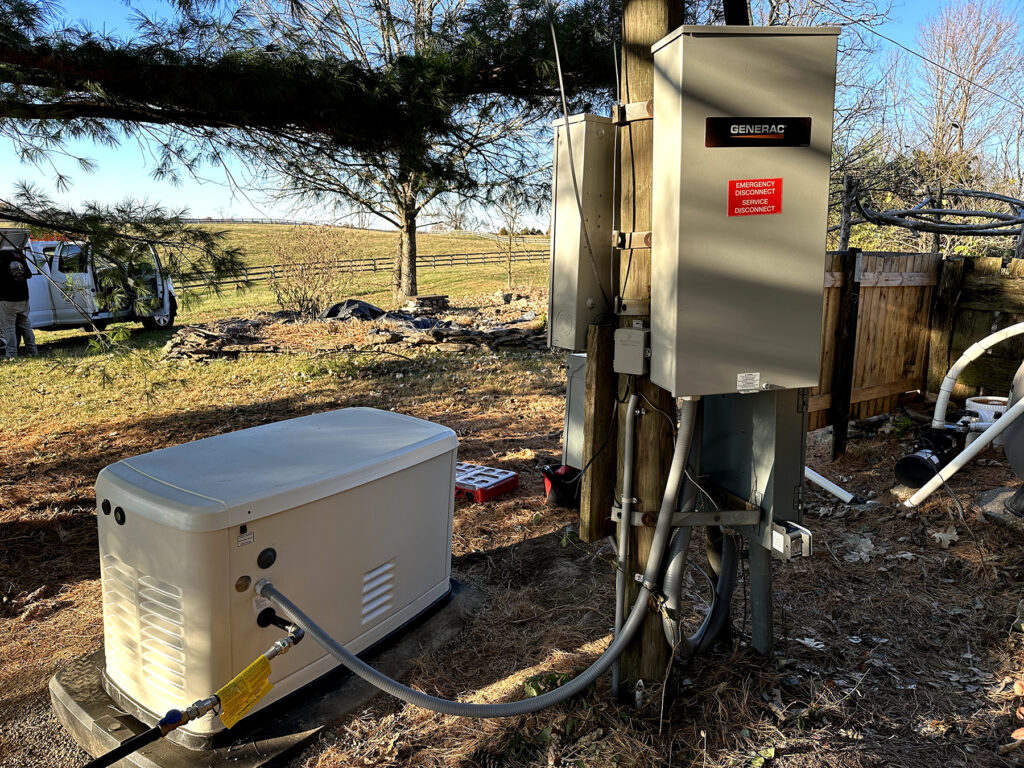
To determine how much power you’ll need for your generator, you can either use an online wattage calculator, the wattage information on your appliances or your electrical bill. We recommend multiplying the total wattage of your appliances by 1.5 to give yourself a safe margin of error. A small to medium-size house in the U.S. typically uses a minimum of 5,000 to 7,000 watts, so you should expect most generators to have a minimum of 8,500 to 10,000 watt outputs.
Cooling Mechanisms
When you’ve determined what power level you need from your whole house generator, you should consider whether you want an air-cooled or liquid-cooled system. An air-cooled generator either passively uses the surrounding air to cool the engine or relies on a fan to maintain temperature.
Liquid-cooled generators pump coolant through the engine block. This coolant absorbs heat from the engine, then is cycled through to the radiator, where it cools off, then moves back to the engine to maintain an appropriate temperature.
Air-cooled generators are usually less efficient, and they tend to have shorter shelf lives when used in whole-house contexts. They often overheat and then automatically shut down. Liquid-cooled generators tend to work best, particularly if you live in an area that often reaches temperatures of over 100 degrees, because they are much less likely to overheat.
Fuel Types
Whole house generators either use liquid propane from a tank or natural gas from a utility line (or custom tank). Propane is cheaper and less contaminating, but using natural gas means you won’t have to refill a tank (although this isn’t an option if you’re looking to go off the grid).
Be sure to purchase the right type of generator for the fuel you’re looking to use, or check to see if it can be easily converted from one fuel source to the other (most can be).
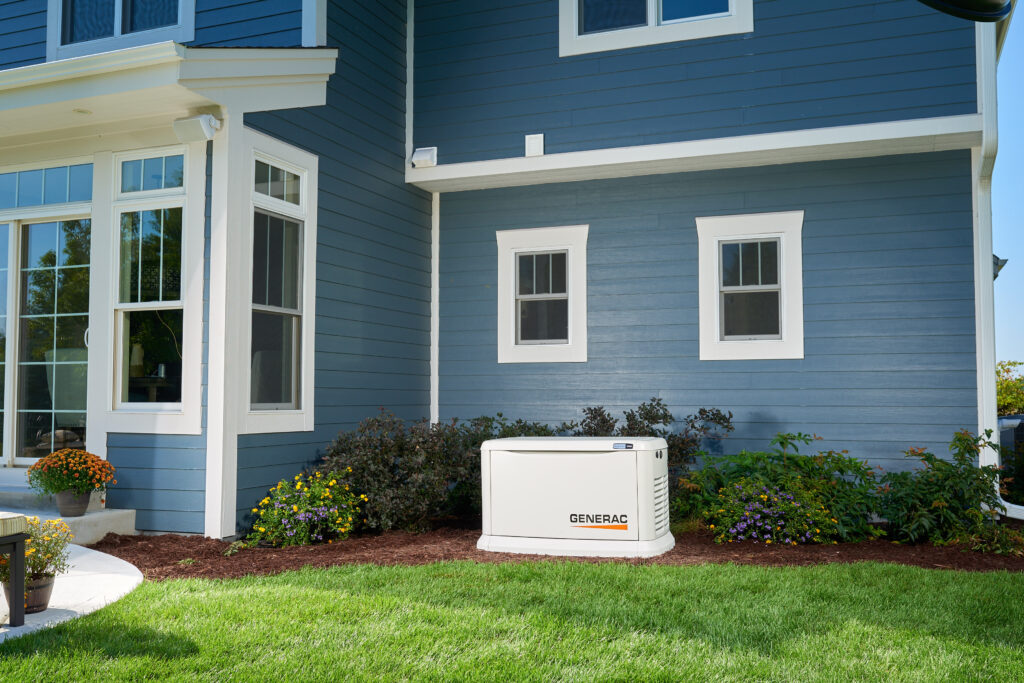
Budget
Choosing the right whole house generator based on your budget involves careful consideration of your power needs and available options. While these generators offer excellent backup power solutions, your choice should align with your financial constraints.
Understanding your budget is the first step. Whole house generators come in various sizes and capacities, each with a corresponding price range. Smaller generators that power essential circuits will typically be more budget-friendly than larger units that supply power to the entire house.
It’s essential to balance your budget and your power requirements. Assess your essential appliances and systems that need backup power during outages. This evaluation will help you determine the generator’s capacity that suits your needs without overspending.
Transfer Switch
When shopping for a whole house generator, it’s important to make sure you purchase the right transfer switch. This component is a crucial link between your generator and your home’s electrical system. It’s what enables a seamless transition to backup power during outages.
You’ll want to assess your power demands to choose the ideal transfer switch for your whole house generator. The size of your generator dictates the transfer switch capacity you’ll require. A transfer switch that aligns with your generator’s output ensures efficient power distribution across your household circuits.
Simultaneously, factor in the complexity of your electrical system. Automatic transfer switches offer effortless power restoration by detecting outages and facilitating a smooth switch to generator power. They’re particularly beneficial for those seeking a hands-off experience. On the other hand, manual transfer switches are more budget-friendly and necessitate manual intervention to redirect power. Weighing convenience against cost-effectiveness is crucial.
Noise Level
Whole house generators can run quite loudly (65 decibels on the low end to 69+ on the high end), so it’s important to take that range into consideration when purchasing and placing your generator.
Reasons to Get a Whole House Generator
Great Backup Power Option
A whole house generator can provide back-up power for your entire home, including for essential appliances like your air conditioner, sump pump and refrigerator. Property estimated and installed, you should be able to run everything at full capacity, whether you’re going off the grid permanently or you’re forced off temporarily due to an emergency.
Trying to determine the size generator you’d need? If, for example, you wanted to power a window air conditioning unit, your immersion water heater and a microwave, you’d need a generator with a 10,000-watt output to be safe.
| HOUSEHOLD ITEMS/APPLIANCE | POWER USAGE (WATTAGE) |
| Refrigerator | 300 – 800 |
| Window AC (6,000 BTU) | 600 |
| Central AC (12,000 BTU) | 900 |
| Central AC (24,000 BTU) | 2,500 – 2,800 |
| Water Heater (Tankless) | 2,500 – 28,000 peak wattage |
| Water Heater (Immersion) | 4,500 |
| Electric Cooktop | 1,200 – 3,000 per burner |
| Induction Cooktop | 1,000 – 3,000 |
| Heat Pump | 2,000 – 2,600 for 2.5-ton unit |
| Dehumidifier | 50 |
| Microwave | 1,000 |
| Light Bulb | 2 – 18 for LED |
Increased Power Capabilities
Whole house generators are able to do this because they have higher power capacities—22 to 48 kilowatts—than portable generators, and can run significantly longer without maintenance.
Permanent Installation
Portable generator options aren’t permanent installations like whole house ones are. That means that, in advance of outages or other emergencies, you need to have fuel on hand, which can often be in short supply. These aren’t concerns with whole house generators, which can use fuel from a much larger, pre-filled tank
How to Install a Whole House Generator
Installing a whole house generator isn’t something you likely want to DIY. It involves electrical wiring and working with fuel—all of which is a major fire or explosive risk. There are associated local rules, which anyone installing one should be aware of. We highly recommend hiring a professional.
Methodology
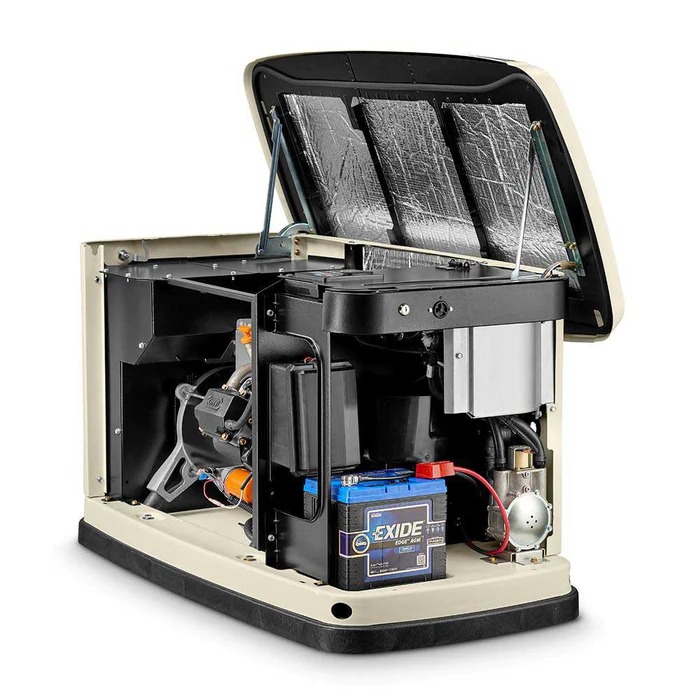
To determine the best whole house generator ranking, the Forbes Home Improvement editorial team analyzed 16 major whole house generators, with each generator’s star rating determined by evaluating a variety of metrics, including:
Price (25%)
Price made up one of the bigger percentages of the best whole house generator ranking for the simple fact that price can make or break a homeowner’s decision. List price for each generator was evaluated from different platforms including Amazon, Home Depot, Lowe’s and more.
Warranty (25%)
Each generator’s warranty was listed and analyzed. The more years a generator’s warranty policy had, the more points a generator was awarded.
Noise Level (10%)
For the comfort of the homeowner, 10% of the total ranking went to noise level (dbA). Each generator’s noise level was evaluated and from there was scored based on the loudness (or softness) of its average level.
Remote Monitoring (5%)
Remote monitoring could be a must-have for some homeowners who often evacuate their homes for natural events, or for those on vacation, which is why 5% of the ranking is made up of remote monitoring options among each generator.
Automatic Transfer Switch (5%)
Whether a generator had an automatic transfer switch, and any included circuits, were analyzed and lumped into the total ranking.
Load Management (5%)
Each generator was evaluated based on whether or not it offered a load management option, which is a popular add-on for many generator inquirists.
Electric Start (5%)
Whether or not each generator offered an electric start feature gained or lost a generator points to amount to 5% of the total ranking.
High Temperature Shutdown (5%)
Those living in warmer regions or simply worried about a generator overheating may appreciate this category at 5% of the total ranking. Each generator was evaluated based on whether or not it offered the high temperature shutdown option.
Heat Control (5%)
Heat control, similarly to high temperature shutdown, can help mitigate any damage done to a generator, which is why the team included it as a category to make up 5% of the total ranking.
Overload Protection (5%)
With a yes or no based on whether a generator included overload protection, each product gained or lost points totaling 5% of the total ranking.
Low Oil Protection (5%)
Another potentially helpful indicator for some homeowners, low oil protection options account for 5% of the total best whole house generators ranking.
Reference (https://www.forbes.com/home-improvement/electrical/best-whole-house-generators/)
